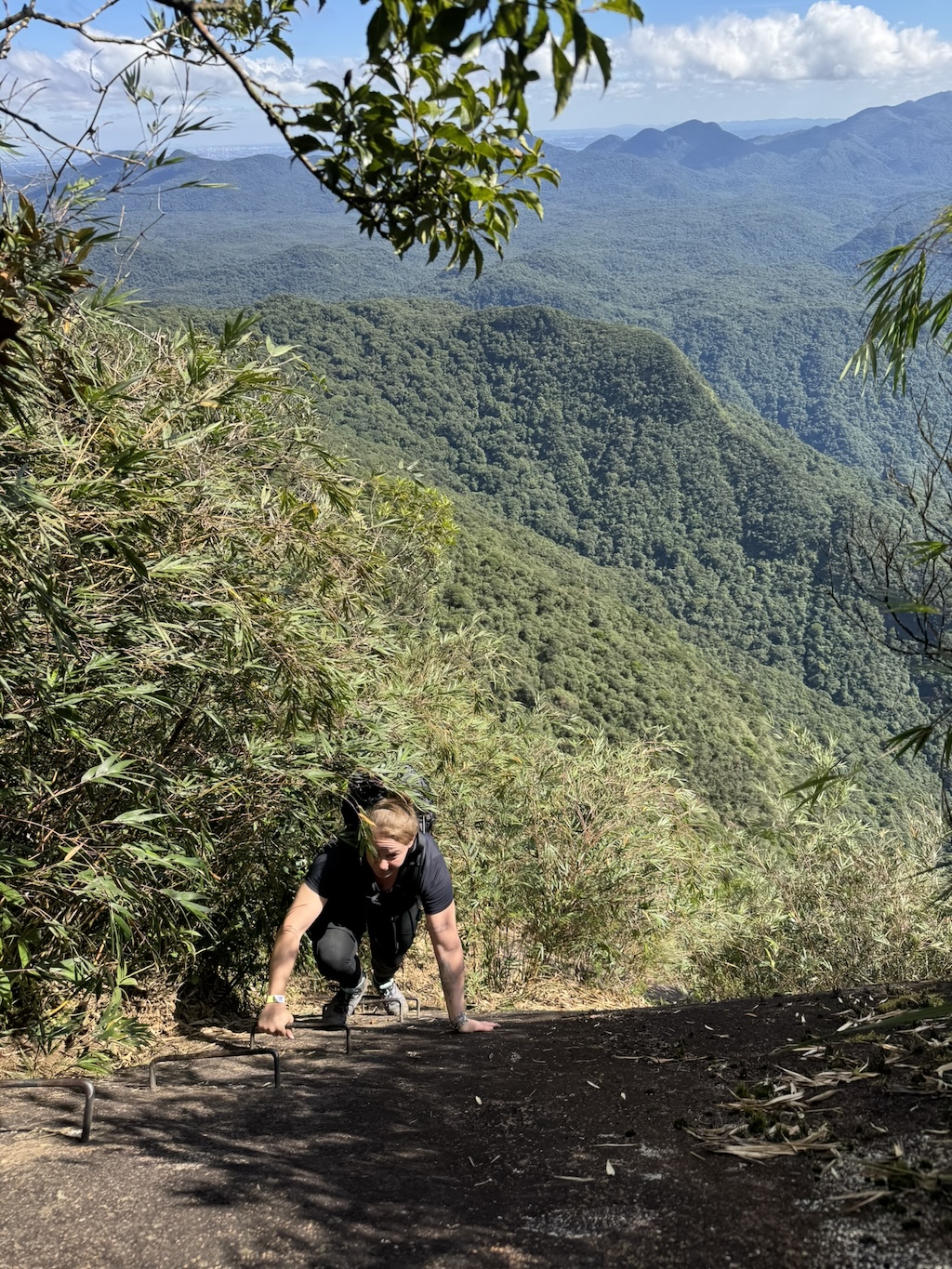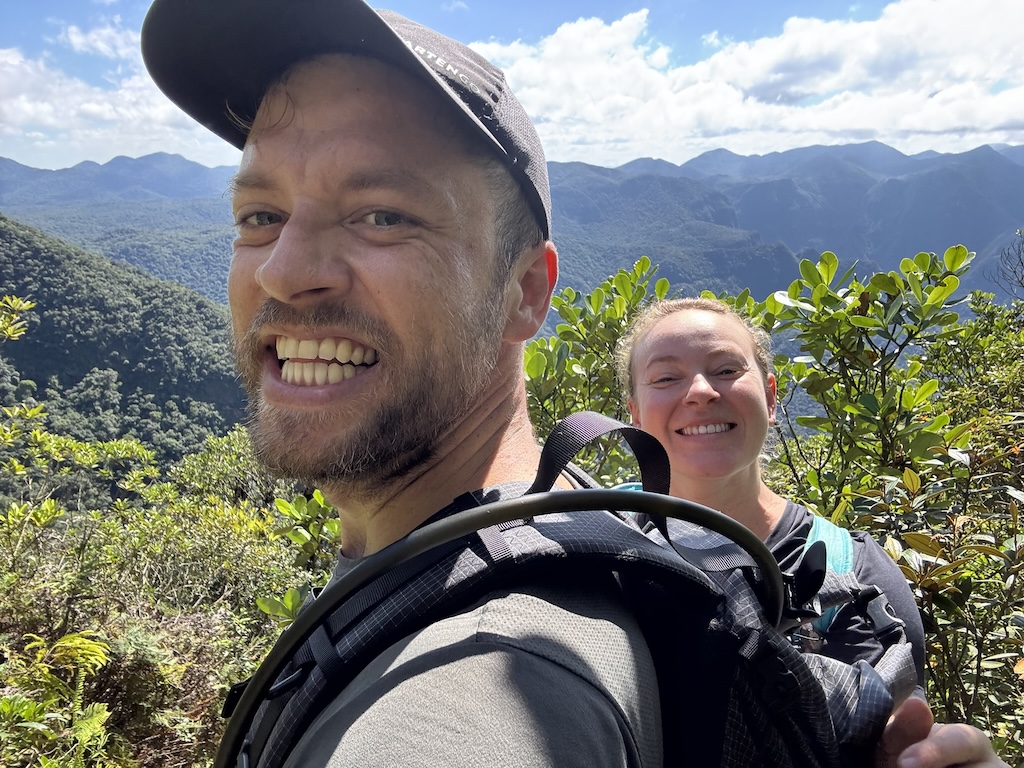As developers, we often find ourselves in challenging situations - debugging complex systems, making critical architectural decisions, or leading teams through technical challenges. But sometimes, the most profound lessons come from outside our codebase. This Labor Day, I found myself on a mountain trail that taught me invaluable lessons about leadership, risk assessment, and the importance of knowing when to stop.
 The starting point of our journey - a beautiful but challenging trail ahead
The starting point of our journey - a beautiful but challenging trail ahead
The Challenge
The trail was classified as “very hard” - much like those complex technical problems we face in our daily work. My partner and I, together for three years, embarked on this journey. As we reached the highest part of the peak, we encountered steel stairs that demanded absolute precision - there was no room for error, much like deploying critical production changes.
 The steel stairs that tested our limits and taught us valuable lessons
The steel stairs that tested our limits and taught us valuable lessons
The Turning Point
At the summit, I noticed something was off. My partner was showing signs of fear while navigating the steel stairs. We were in a precarious position - 100 stairs with no safety measures, friends both behind and ahead of us. The situation reminded me of those moments in development when we push forward despite warning signs, driven by the sunk cost fallacy of “we’re almost there.”
The Decision
With just 20 minutes left in our 5-hour hike, I made a crucial decision. I stopped and asked my partner if she wanted to continue. This moment was pivotal - it wasn’t just about the hike anymore; it was about leadership, trust, and recognizing when to say “no.” She agreed to turn back, and as we descended, the adrenaline hit her hard, resulting in tears. It was a raw, vulnerable moment that taught us both valuable lessons.
 The journey that brought us closer and taught us about leadership and trust
The journey that brought us closer and taught us about leadership and trust
The Lessons
1. Communication is Key
Just as we need clear communication in our development teams, we learned the importance of being vocal about our fears and limitations. My partner admitted she was afraid to “spoil the trail” or hold us back. This parallels how developers sometimes hesitate to voice concerns about technical debt or architectural decisions. We made a pact to always be honest about our feelings and fears, both on the trail and in our daily lives.
2. Vulnerability Builds Stronger Connections
The shared experience of vulnerability created a deeper bond between us. In development teams, showing vulnerability and admitting when we don’t know something can foster stronger collaboration and trust. It’s okay not to have all the answers, whether you’re on a mountain or in a code review.
3. Know Your Limits
We realized that high-adrenaline activities aren’t for us. Similarly, in development, it’s crucial to recognize when a particular technology stack, architecture, or approach doesn’t align with your team’s strengths and comfort level. It’s better to choose sustainable paths that match your capabilities rather than pushing for something that causes unnecessary stress.
4. Endurance Over Adrenaline
We discovered we prefer endurance over adrenaline. This translates perfectly to software development - sustainable, consistent progress often yields better results than high-pressure, adrenaline-fueled coding sprints. Building systems that can endure and scale is more valuable than quick, adrenaline-driven solutions.
Applying These Lessons to Development
- Risk Assessment: Just as we assess trail conditions, we should evaluate technical risks before making critical decisions.
- Team Communication: Create an environment where team members feel safe expressing concerns.
- Sustainable Pace: Focus on long-term sustainability rather than short-term adrenaline rushes.
- Knowing When to Stop: Recognize when a technical direction isn’t working and have the courage to pivot.
Trail Details
The hike was in the Conjunto Marumbi and here is my Strava activity recorded on my iPhone.
We tried the white track, which goes to the Olimpo view.
Conclusion
The mountains taught us that true leadership isn’t about pushing through at all costs. It’s about making informed decisions, communicating openly, and knowing when to change course. These lessons are just as valuable in the boardroom as they are on the mountain trail.
As developers and leaders, we should embrace these principles:
- Listen to your team’s concerns
- Be willing to change direction when needed
- Value sustainable progress over adrenaline-fueled achievements
- Build trust through vulnerability and open communication
Remember, sometimes the most courageous decision is knowing when to turn back and try a different path. Whether you’re on a mountain trail or in a development sprint, these lessons can guide you toward better decisions and stronger leadership.
What lessons have you learned from your adventures that apply to your development work? Share your stories in the comments below.
